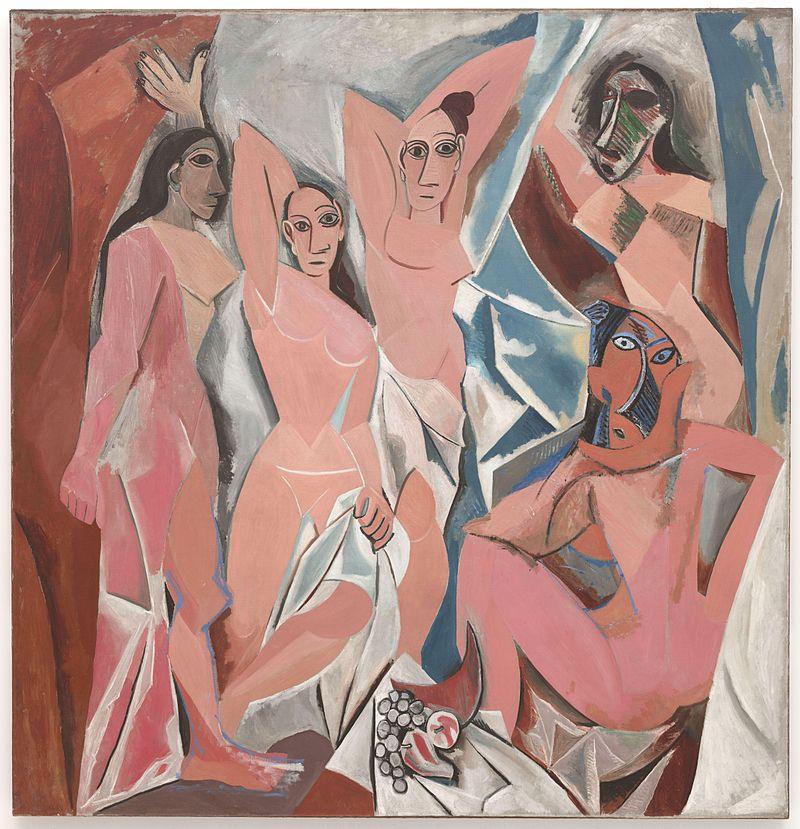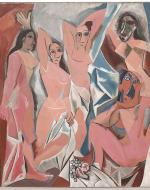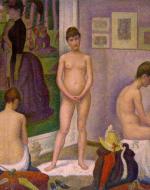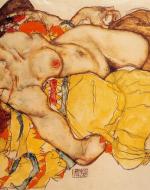Created by Anna O'Brien on Tue, 02/27/2024 - 12:14
Description:
Display Explanation
Walking through a plain dark wood archway, you enter into a room with black walls and dark wood flooring. The room is a standard room with four walls that are about standard height and twice as long as they are high. On those walls are curtains that are a deep purple color that shine a beautiful iridescent blue when the lights hit them just right. The room smells faintly of perfume, a floral scent with notes of a pungent alcohol smell underneath.
The main lights are low yellow tinted LEDs; they fill the room with a soft yellow glow. Above those deep purple curtains are three smaller lights in the middle of the wall that point down and to the sides. They are dim enough to not compete with the yellow-tinted lighting on the ceiling, but not so dim as to be unable to shine the perfect amount of light onto the iridescent curtains.
The curtains extend all the way to the corners where they are filled with dresses of the late 19th century and white sheets. The white sheets hang from the curtains in a drapey fashion, falling to the floor and covering some of it. The dresses are on dress forms that sit on top of the white sheet. The hands pop out of the white sheet seemingly at random with no discernable pattern. It is roped off with the same deep purple material that the curtains are made of.
There are three paintings on the walls of the dimly lit room. On the wall to your left, Georges Seurat’s The Models is hanging in the center of the wall. In this painting, you see a woman in three different poses in various stages of undress. Beneath her are several items of clothing: a late 19th-century style purple dress, a pair of green stockings, and a yellow hat with a white ribbon on it. They are on a small platform that stands just beneath the painting, resting on three different boxes covered in a white sheet. On the wall across from the entrance is Two Girls Lying Entwined by Egon Schiele, hanging in the center of the wall. In this painting, you see two girls lying on top of each other. Beneath the image is another small platform with a yellow dress lying across it. On the wall to your right is Pablo Picasso’s Les Demoiselles d’Avignon. It too hangs on the center of the wall. The painting depicts several women staring at the viewer. Beneath the painting is a small platform with a white sheet draped across it and a bowl of fruit sitting in the middle.
Installation Note
Welcome to the exhibition of “Stare”
These three pieces help to show us the nature of sexuality in the model. In the display we have The Models by Georges Seurat from 1887, Les Demoiselles d’Avignon by Pablo Picasso from 1907, and Two Girls Lying Entwined by Egon Schiele from 1915. In all three paintings, they depict some method of posing. In Seurat’s painting, he depicts a model in three different poses (Russell, The Models), in Picasso’s the women are sex workers who pose directly for the viewer, and in Schiele’s, the women are posing on top of each other. In this way, all three of the paintings have a woman/women directly displaying their bodies for the viewer. In this display, they invite the viewer to look, expecting it. They’re posing specifically for the artist, therefore being in some way shaped by the male gaze. The fact that their bodies are on display in some way for an artist to show off their skill in the case of Seurat shows a sort of objectification of women’s bodies in that they are good to be looked at.
In terms of the set-up of the physical space, I decided that the objects should be placed outside of the painting to tie into the fact that deliberate choices are being made by both the artist and the model. While the women are the focal point of each painting, there are other points of interest too, mainly in Seurat’s work. The differences between the pieces lie in that Schiele’s work doesn’t have any access objects in the piece, just what the girls are wearing. This leads the viewer to focus directly on the girls who are posing, which makes the setup a bit harder. However, this focus directly on the women highlights the deliberate nature of the choices being made by both the women and the artist. The women’s choice in how they are portrayed helps lead the viewer to feel a sense that they have control over their sexuality. The models have control over how they pose and stand and look, which is reflected in their gaze over the viewer.
They also invite the viewer to be a voyeur into their world, such is more overt in Les Demoiselles d’Avignon than in the other two paintings. In Seurat and Schiele’s paintings, the models are posing more for the artist than the viewer. This is made clear in the way that in two of The Models’ poses, she is facing away from the viewer and one of the women in Two Girls Lying Entwined is not looking at the viewer. In Picasso’s piece, the women were sex workers, thus they were trying to entice the viewer into looking. In their attempts to get the viewer to look, they have power over the viewer, which reflects that women have control over their sexuality.
Picasso, Pablo. Les Demoiselles d'Avignon. 1907. Museum of Modern Art, New York. https://en.wikipedia.org/wiki/Pablo_Picasso#/media/File:Les_Demoiselles_d'Avignon.jpg. Accessed 15 Feb. 2024.
Russell, Peter. Delphi Complete Paintings of Georges Seurat (Illustrated). Version 1, Delphi Classics, 2019, p. The Models, books.google.com/books?id=dtrFDwAAQBAJ&printsec=frontcover#v=onepage&q&f=false. Accessed 28 Feb. 2024.
Seurat, Georges. The Models. 1887. https://commons.wikimedia.org/wiki/File:Georges_Seurat_-_Les_Poseuses.jpg. Accessed 15 Feb. 2024.
Schiele, Egon. Two Girls Lying Entwined. 1915. https://www.wikiart.org/en/egon-schiele/two-girls-lying-entwined-1915. Accessed 28 Feb. 2024.
Copyright:
Associated Place(s)
Featured in Exhibit:
Artist:
- Multiple Artists




